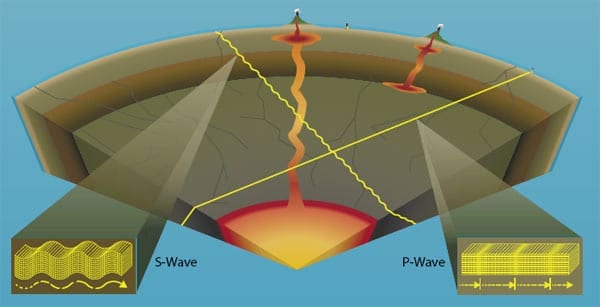Earthquakes and Seismic Waves
When an earthquake occurs, rocks at a fault line slip or break, and two sections of Earth’s crust physically move relative to one another. That movement releases energy, and two types of seismic waves radiate outward from the earthquake through Earth’s interior and along its surface. Compression waves alternately compress and release rocks in the direction the waves are moving (similar to the air compression we hear as sound). Shear waves move rocks perpendicular to the direction the waves are moving.
Seismographs (seismometers and associated recording systems) detect and measure these waves. Compression and shear waves travel through the planet at different speeds. By measuring the arrival times of the waves at different locations around the world, scientists draw inferences about the temperature, composition, and degree of deformation of the material that the waves travel through. These details provide a more thorough understanding of hidden processes that occur Earth’s core, mantle, and crust.
With seismic measurements scientists can also pinpoint an earthquake’s hypocenter--its source beneath the surface. The characteristics of an earthquake itself, such as its location, magnitude, fault orientation, and fault slip, are important for understanding tectonic processes at global and regional scales, and seismology is essential for understanding the physics of earthquake initiation and rupture.

